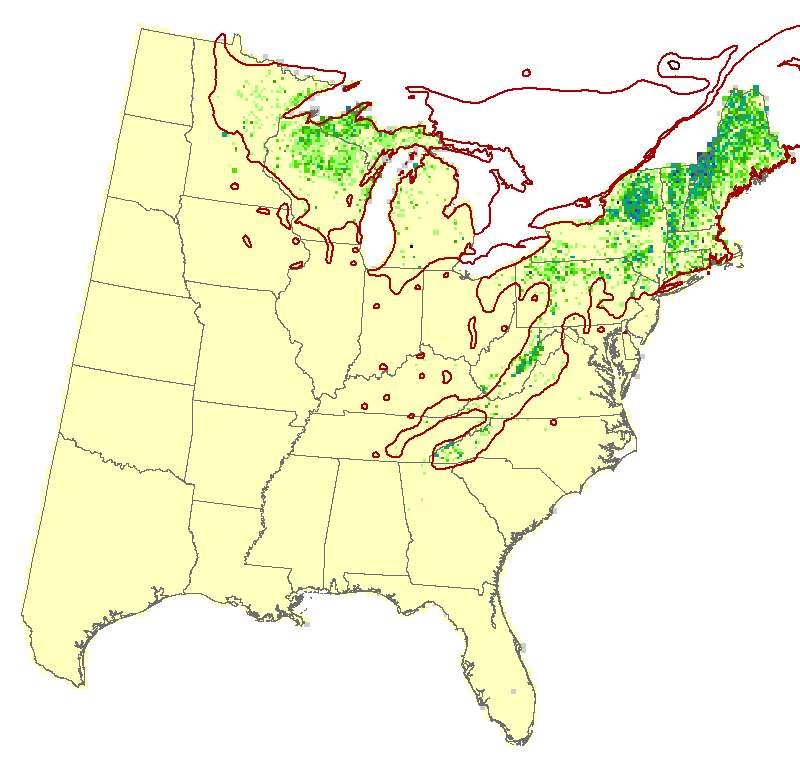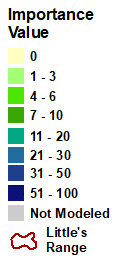yellow birch (Betula alleghaniensis)
Model Reliability: High
| GCM SCENARIO | % Area Occ | Ave IV | Sum IV | Future/Current IV |
|---|---|---|---|---|
| Actual | 10.5 | 5.8 | 17721 | N/A |
| RFimp | 13.2 | 4.3 | 16563 | 0.93 |
| CCSM45 | 16.6 | 2.9 | 13976 | 0.84 |
| CCSM85 | 15.5 | 2.6 | 12050 | 0.73 |
| GFDL45 | 15.7 | 2.6 | 12139 | 0.73 |
| GFDL85 | 15.8 | 2.4 | 11393 | 0.69 |
| HAD45 | 15.3 | 2.8 | 12579 | 0.76 |
| HAD85 | 15.6 | 2.5 | 11445 | 0.69 |
| GCM45 | 17.4 | 2.5 | 12916 | 0.78 |
| GCM85 | 16.6 | 2.4 | 11638 | 0.7 |
Regional Summary Tree Tables
Summaries for tree species are available for a variety of geographies, in both PDF and Excel format. These summaries are based on Version 4 of the Climate Change Tree Atlas
Interpretation Guide
Yellow birch is narrowly distributed (7.6% of area), dense, and with low IV across the NE and upper Midwest. The reliable model suggests a slight decrease but still classed as 'No change' under either scenario. With moderate adaptability, this species scores a fair capability to cope with a changing climate. SHIFT shows moderate infill.
Family: Betulaceae
Guild: opportunistic, long-lived intermediate
Functional Lifeform: medium-size to large deciduous tree
| 3.4 | -1.38 |
| -0.03 |  |
MODFACs
What traits will impact yellow birch's ability to adapt to climate change, and in what way?:
Primary Positive Traits
Dispersal
Primary Negative Traits
Fire topkill Insect pests Disease



